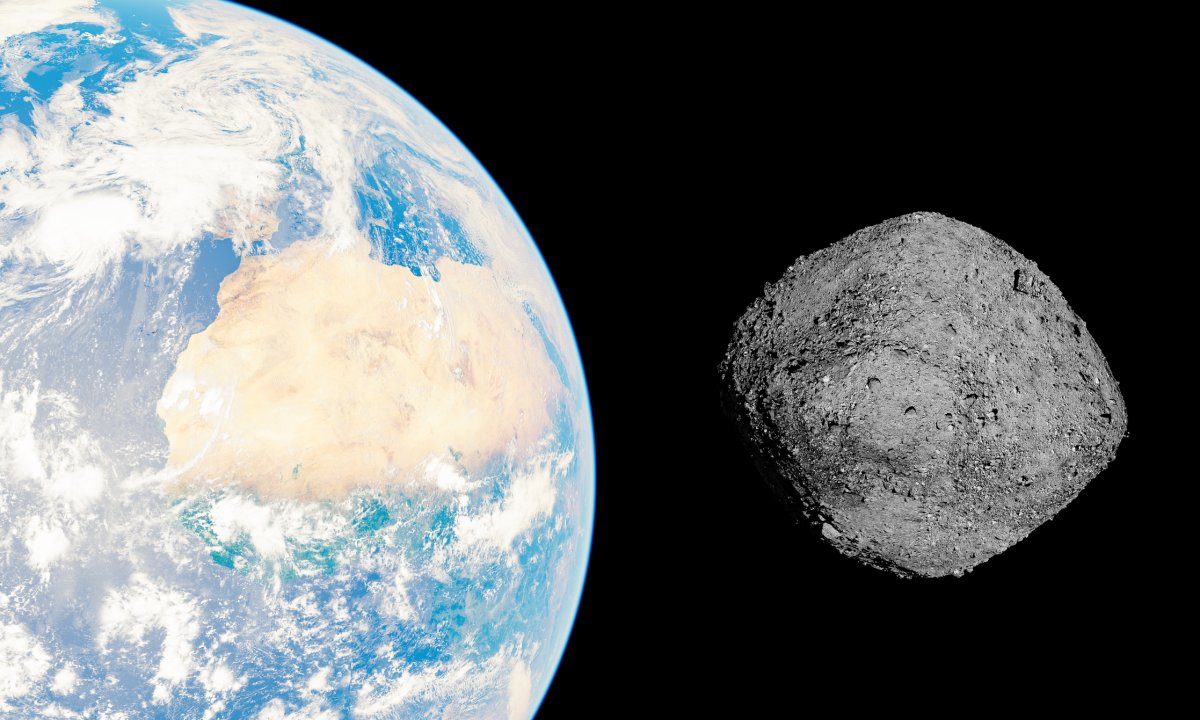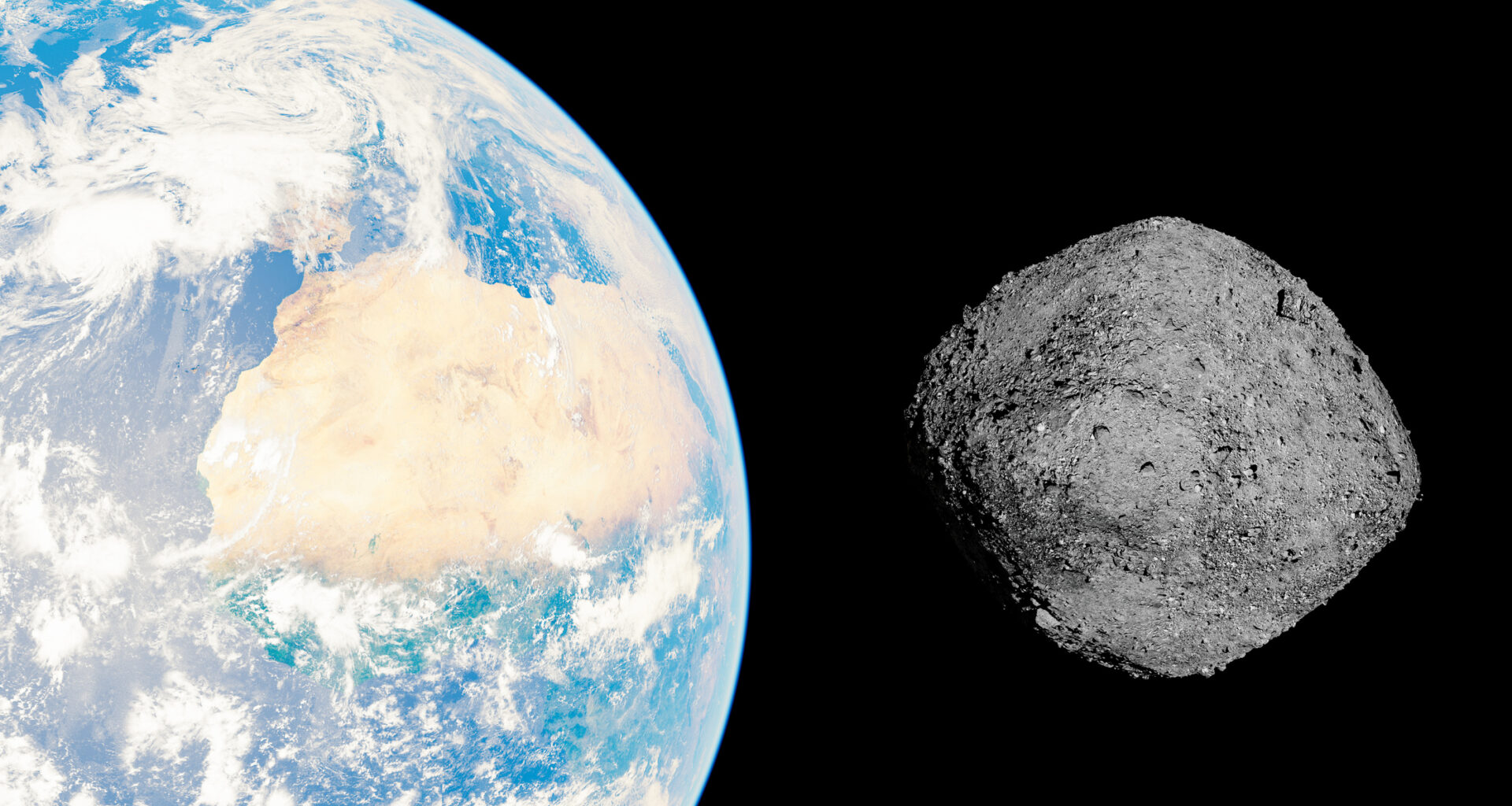NASA is monitoring a bus-sized asteroid currently zooming past Earth at an incredible 22,638 miles per hour.
The rock, designated “2025 HP,” is estimated to be about 32 feet wide, according to NASA’s Jet Propulsion Laboratory (JPL). It will come within 211,000 miles of our planet before continuing its journey through the solar system. Experts predict it will not make another close approach until 2028.
However, “2025 HP” is not the only space rock flying nearby. Today, a separate 40-foot, bus-sized asteroid named “2025 HN4” is also making a close pass, traveling at 19,260 miles per hour and reaching a distance of 404,000 miles from Earth. This one is forecast to return again in 2030.
NASA’s watchlist doesn’t end there. Scientists are also tracking a 73-foot, airplane-sized asteroid known as “2025 HQ4,” currently located 1,150,000 miles away and speeding along at 29,885 miles per hour.

A stock image of an asteroid approaching Earth.
A stock image of an asteroid approaching Earth.
AntonioSolano/iStock / Getty Images Plus
Another object under observation is “2025 HG2,” a 34-foot, bus-sized rock passing at a distance of 1,530,000 miles, traveling at a comparatively slower 10,961 miles per hour.
Finally, an even larger asteroid, dubbed “2025 HL3,” measuring approximately 140 feet across, will make a more distant pass, coming within 3,340,000 miles of Earth at a velocity of 16,933 miles per hour.
Understanding Asteroids and Why NASA Tracks Them
Asteroids are remnants from the formation of the solar system about 4.6 billion years ago. Most orbit the Sun between Mars and Jupiter in the main asteroid belt, though some, called Near-Earth Objects (NEOs), pass much closer to our planet. Studying these rocky bodies helps scientists learn more about the early solar system and the processes that shaped our world.
NASA tracks asteroids through several programs to monitor objects that could pose a threat to Earth. Using ground-based telescopes and space missions, researchers study the size, shape, orbit, and composition of these bodies. Programs like the Near-Earth Object Observations Program and the Center for Near-Earth Object Studies (CNEOS) help scientists predict asteroid paths and assess potential impact risks.
While most asteroids that pass near Earth pose no immediate threat, NASA keeps a close watch.
However, civilization-threatening asteroids are very rare. Only every few million years does an a space-rock large enough to threaten our planet.
Rocks bigger than 1-2 kilometers could have global impacts, the largest known potentially hazardous asteroid is called Toutatis, which has a diameter of 5.4km.
Do you have a tip on a science story that Newsweek should be covering? Do you have a question about asteroids? Let us know via science@newsweek.com.
